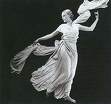Having worked for years in luxury stores, my opinion is based on "onhand experience".
Points of sale have gone through many phases in the recent decade but one factor has always remained the same
"location, location, location" - yes but which one - and how?
I won't be able to give you insider information on Paris real estate. It's Up's and Up's are still a mystery to me. Shop locations, however, are not.
As customer types vary, and the luxury industry has gone from "connoisseur clientèle", "luxury consumers" to "me generation" back to "easthetically aware", so have locations varied. To be able to offer complete sensory shopping experience, stores have moved or opened in various locations, creating rollercoaster trends in real estate (and spanning as many client types as possible).
In 1992 the Faubourg Saint Honoré was a narrow street with only Hermès and Lanvin as shopping highlights. The top location at that time was Ave Montaigne. Things have changed, although Ave Montaigne still is THE thoroughfare for luxury shopping (parking space "oblige"), Fbg St Honoré now looks like a quaint luxury disney village, Dolce, Prada and Chanel all hobbly topply one next to the other. The adjacent streets have scrubbed up and the whole area is now populated by logo bag carrying tourists.
Also, let's not forget the creation in the late 90's of a whole new luxury epicenter in Saint Germain- big uproar at the time. The low key french intelligencia inhabited this area and definitely did not want an Emporio Armani Megastore there.
There was a project to fashion another center on the Marché Saint Honoré (due to the creation of a passage from place Vendome) following the huge success of Colette. This project was abandoned after Sept 2001. This area now houses "createur" brands.
So, ok, luxury stores are to be found all around. The "triangle d'or" - golden triangle - which traditionally spanned the area from Ave George V to the Champs Elysées to Ave Montaigne, has now extended to 3 poles : Montaigne-Fbg-St Germain.
Some brands choose to be present in all locations (eg Prada).
Is uniformity in visual identity still relevant in a tentacular luxury distribution schema?
As my experience goes, local clients will not be very faithful to one point of sale within a same brand and city. Sympathy for a particular sales assistant aside, of course.
Marketing gurus have been too busy reenforcing international VI unity in points of sale to fathom the impact this may have on local clients. These are screaming to be identified. Generally this population lives in the same area as the store and has strong ties to it. If these upmarket neighbourhoods have a history, aura or particular ambiance (eg Saint Germain) why not take it into account? (generally, that's why the space is so expensive)
This may also work for out of town clients. Instead of seeing an exact replica of their home store, they may appreciate the diversity and creativity of a coherent yet different space.
In an age where luxury stores are competing for clients who are becoming increasingly needy of personal identification, does a brand need to impose heedlessly it's unique vision, or is the future
translating brand image to geography?
PRADA STORES
Summary only...
 Big Big event for our little ones.
Big Big event for our little ones.
















